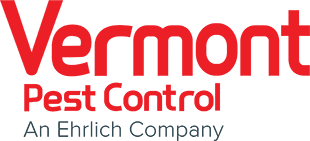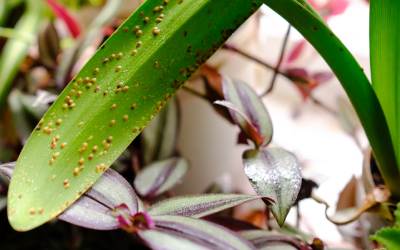Houseplants can be a beautiful accent to your home décor. They act as an air purifier and replenish with oxygen. But, the addition of houseplants to your home may also mean the addition of bugs. From a Snake Plant, Bamboo Palm, English Ivy, or Spider Plant, bugs are attracted to any indoor houseplant. Houseplant bugs are not ideal, but, there are ways to deal with these added pests! Vermont Pest Control has provided the safest and most effective pest solutions for you and your home since 1991. We have identified ways that you can help rid your plants of bugs yourself.
Common Houseplant Bugs
- Fungus Gnats – These pests make their home in the plant soil. They look a lot like fruit flies and if given the opportunity they will travel from one plant to another. Fungus Gnat larvae feed on fungus in the plant soil, which most commonly occurs while the soil is moist and/or in a humid environment. While fungus gnats will not kill the plant, they feed on the new roots, which damages your plant making them a nuisance.
- Mealybug – Not to be confused with aphids, mealybugs are very similar. Like aphids, mealybugs feed on plant sap. They have white wooly exteriors that are caused by waxy secretions. Mealybugs are sometimes described as soft-scale insects, which means they don’t have armored scales. They can also live in the plant soil.
- Scales – To the untrained eye, you wouldn’t identify scales as a bug because they don’t move. Some species are covered in armor-like plating, which is how they came to be named. Scales are most likely found in groups on the plant stems.
- Spider Mites – Spider mites are so tiny they are hard to spot. They feed on leaves and green areas of your plants. Because they are nearly invisible, you sometimes won’t know your plant has them until you see the damage. Spider mite damage shows up as small brown spots on leaves.
- Whiteflies – Though small and white like mealybugs, the whiteflies’ have wings, which allow them to fly. Both mealybugs and whiteflies suck nutrients from your plants which can leave plants damaged and yellow. Whiteflies have small triangular-shaped bodies and fly in small groups if disturbed. They leave a sticky residue that comes from their mouths while feeding, which is sweet and can attract ants.
- Aphids – Aphids are small black, green, white or pink oval-shaped bugs. Some do have wings. They can be easier to remove as they aren’t as they don’t move around as much as mealybugs or whiteflies. Aphids also drain your plants of nutrients and if their numbers are large enough they can transmit viruses that can weaken and kill your plants. Aphids multiply quickly so it is important to get the upper hand before they are out of control.
How Do I Get Rid of Bugs on Plants?
You can identify the bugs, now how do you get rid of them? It may take a couple different routes to rid your plants of bugs.
Prevention – Before buying a new plant for your home inspect it for pests or yellowing leaves or leaves that are curling or appear to have died prematurely. If unable to inspect the plant before buying it, at least inspect it before bringing it inside your home. It is always best to err on the side of caution as bugs can travel from plant to plant and you want to protect your other plants from infestations.
Isolation – If you have a plant that is infested with a houseplant bug it is best to isolate it from the rest of your plants. This lessens the chance the bugs will spread to your uninfected plants. This especially is true if you have a plant that has scales as this pest is transmitted from plants touching one another.
Topical treatments –Some bugs, such as mealybugs, can be knocked off by rinsing the plant under a strong spray of water like in a shower or a hose. Also, you could wipe the plant off with a damp cloth.
Additionally, you can also use insecticidal soap, but make sure it is labeled for pest and plant use.
You can also use a cotton ball soaked in rubbing alcohol and wipe down the entire plant. This rarely is a one-time application but once you think the pest population is taken care of, rinse the plant with water.

